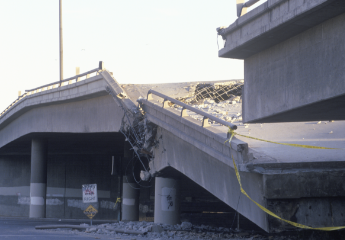Please fill out the Download Section (Click here) below the Comment Section to download the Complete Guide to Composite Sections Guide
1. Introduction
A culvert is a buried structure, similar to a bridge, consisting of single or multi-span construction with a minimum length of 3m for each span. Two horizontal slabs are cast monolithically with two or more vertical side walls, with a maximum span of 6m. Culverts convey stormwater or non-perennial streams across roadways where the soil is weak. They are suitable for difficult site conditions, require minimum maintenance, and have a prolonged service life.
2. The different types of culverts
In this section, various culvert types are described, along with models created in Midas Civil.
👉Pipe Culvert
They are the most common type of culverts since they are economical and are easier to install. Depending on the site conditions and constraints, different shapes of pipe culverts can be seen, such as circular, elliptical, and pipe arch.
Advantages:
- Any desired strength is achievable by proper mix-design, thickness, and reinforcement.
- They are economical and easy to install.
- A pipe culvert can resist high tensile and compressive stresses.
Disadvantage:
- Pipe culverts are susceptible to crown erosion due to organic and chemical reactions.
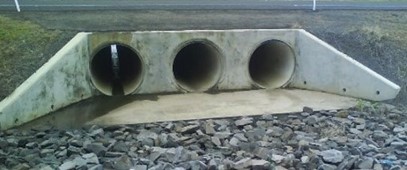
%20Pipe%20Culvert-%203D%20Midas%20Civil%20Model.png?width=206&name=Fig%202(a)%20Pipe%20Culvert-%203D%20Midas%20Civil%20Model.png)
%20Pipe%20Culvert%20-%20Boundary%20conditions.png?width=237&name=Fig%202(b)%20Pipe%20Culvert%20-%20Boundary%20conditions.png)
Figure 2: Pipe Culvert-3D Midas Civil model and the boundary conditions assigned
👉Arch Culvert
Steel, stone masonry, concrete, RCC, etc., are used to construct arch culverts. Unlike box culverts, they are erected without disrupting the water flow; construction is quick. Arch type of culvert maintains the wash bed's natural integrity and is called a low-profile culvert.
Advantages:
- Greater spans can be achieved by arch action.
- Greater hydraulic efficiency.
- It can be constructed without disrupting the water flow.
Disadvantages:
- Need stable support. The soil-bearing capacity should be high enough to withstand the support reactions.
- Need timely maintenance.
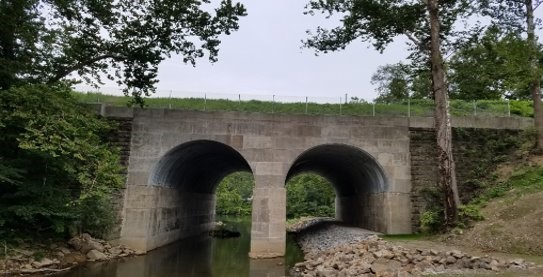
Figure 3: Arch Culvert
%20Arch%20culvert%203D%20Midas%20Civil%20Model.png?width=350&name=Fig%204(a)%20Arch%20culvert%203D%20Midas%20Civil%20Model.png)
%20Displacement%20contour%20due%20to%20vertical%20earth%20pressure.png?width=315&name=Fig%204(b)%20Displacement%20contour%20due%20to%20vertical%20earth%20pressure.png)
👉Pipe-Arch Culvert
Pipe-Arch culverts are suitable for large waterway openings with a more significant hydraulic advantage. Moreover, they provide low clearance and are, much more artistic. Pipe arches are particularly useful for sites with limited headroom and a hydraulic advantage at low flows.
Advantages:
- Suitable for waterways with large discharge.
- An increased headroom is achieved.
- Greater hydraulic efficiency is achieved.
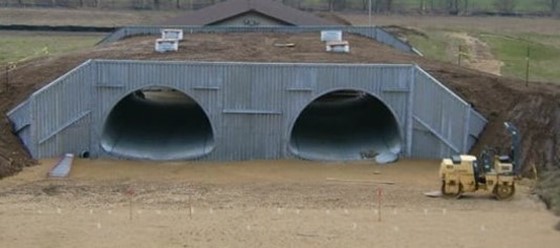
Figure 5: Pipe-Arch Culvert
%20Arch%20culvert%203D%20Midas%20Civil%20Model.png?width=350&name=Fig%204(a)%20Arch%20culvert%203D%20Midas%20Civil%20Model.png)
👉Box Culvert
Box culvert is a monolithically cast, rigid framed structure suitable for non-perennial streams where the soil is weak. The bottom slab reduces the pressure on the ground below. Therefore, a separate foundation is not required making them economical. Even though box culverts are easy to install, a dry surface is needed for installation.
Advantages:
- Suitable for non-perennial streams, where the soil bearing capacity is low.
- The bottom slab reduces the soil pressure.
- They are very economical.
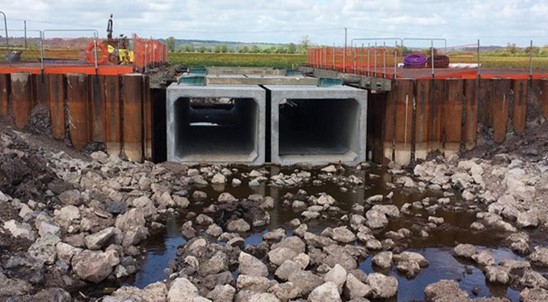
%20Box%20Culvert-3D%20Midas%20Civil%20model.png?width=253&name=Fig%208(a)%20Box%20Culvert-3D%20Midas%20Civil%20model.png)
%20Box%20Culvert-%202D%20Midas%20Civil%20model.png?width=325&name=Fig%208(b)%20Box%20Culvert-%202D%20Midas%20Civil%20model.png)
Figure 8: 3D and 2D models of Box Culvert in MIDAS CIVIL
👉Bridge Culvert
Bridge culverts act as a bridge and a culvert, thus serving a dual purpose. Generally, these culverts are rectangular and built on rivers or canals. The foundation rests below ground level, and the pavement surface is on top of the culverts.
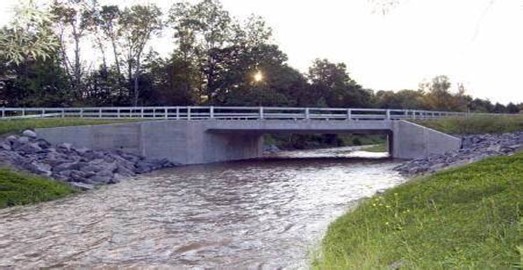
Figure 9: Bridge Culvert
%20Bridge%20Culvert%203D%20Midas%20Civil%20model.png?width=343&name=Fig%205(a)%20Bridge%20Culvert%203D%20Midas%20Civil%20model.png)
%20Bridge%20culvert-Bending%20moment%20contour%20due%20to%20moving%20loads.png?width=289&name=Fig%205(b)%20Bridge%20culvert-Bending%20moment%20contour%20due%20to%20moving%20loads.png)
3. Loads acting on culverts
- Dead load
Dead loads mainly constitute the self-weight of the culverts. The weight of the wearing course, the crash barrier, and other fixed loads are also considered dead loads.
- Earth pressure loads
A linear horizontal soil pressure acts along the vertical walls, and weep holes release the pore pressure. A uniform vertical surcharge is applied on the top slab in deep culverts.
- Traffic loads
Most of the culverts experience moving loads throughout their lifetime. Traffic loads should be applied over culverts like bridges following the various codes used worldwide. The upcoming articles will discuss the live load dispersion on culverts and the different design codes used.
- Buoyant force
The buoyant force is the upward thrust acting on culverts due to buoyancy. In many cases, the structure gets uplifted and carried away due to strong water currents. The weight of culverts should be able to withstand this uplift.
- Temperature loads
Stresses caused by the expansion and contraction of indeterminate structures like culverts due to temperature variation are known as temperature stresses. They can be classified into 2: uniform temperature - stresses caused due to uniform heating and cooling of the structure (climatic changes) and gradient temperature stresses – caused due to differential heating and cooling of members along the section.
Apart from the above-listed loads, dynamic loads are also considered in the case of rail tracks loading on top.
4. What's next?
In this blog, we briefly discussed various culverts and their models created in Midas Civil. The upcoming blog will discuss the live load dispersion on box culverts following different design codes. Stay tuned.
 Get Started midas Civil
Get Started midas Civil
 Featured blog of this week
Featured blog of this week







.png)


